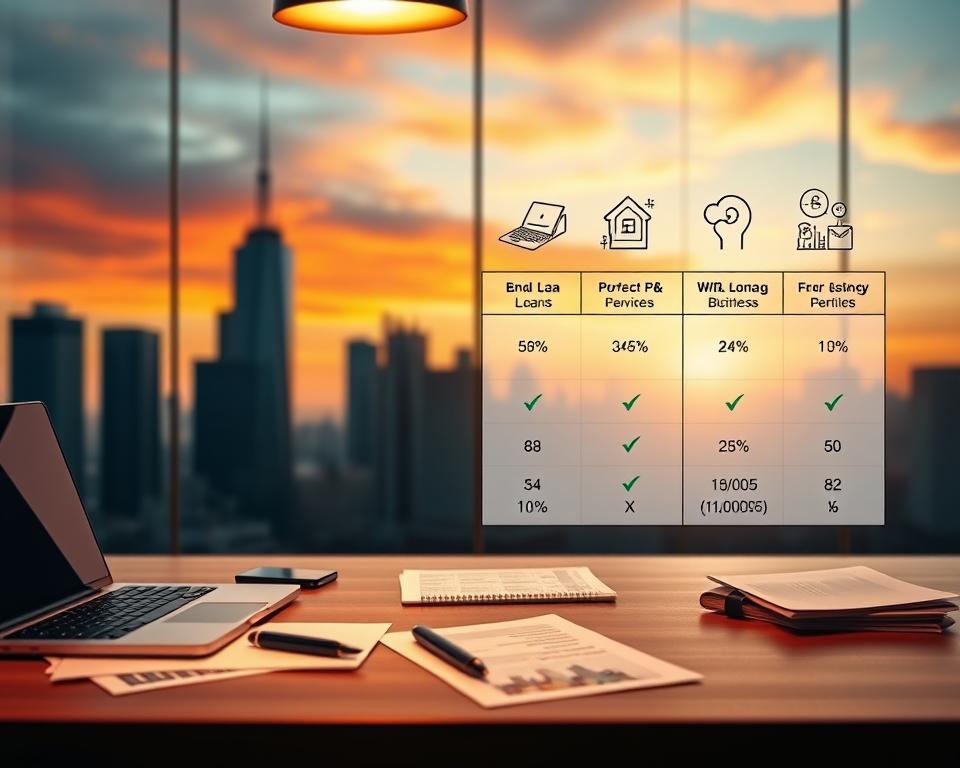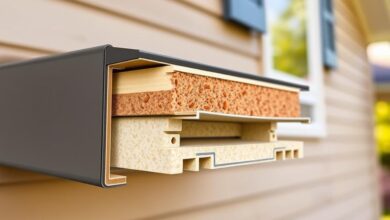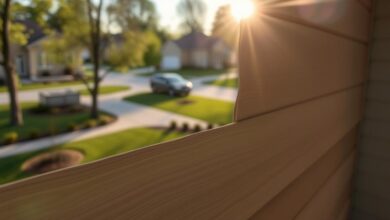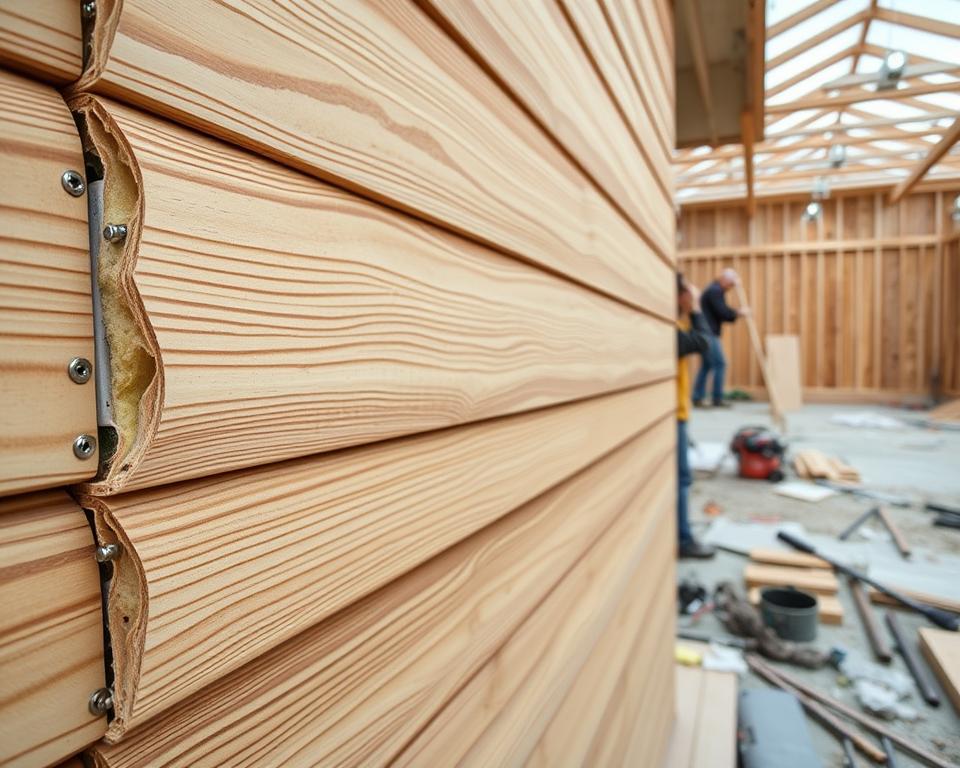Insulated Siding Cost per Sq Ft: A Comprehensive Guide
Homeowners often look at insulated siding to boost their home’s energy use and look. Knowing the cost is key for planning and making choices.
The cost per square foot changes based on several things. These include the siding material, how hard it is to install, and where you live. Generally, insulated siding costs more than regular siding.
Even though it costs more upfront, insulated siding saves money in the long run. It cuts down on energy bills and can raise your home’s value. This guide will cover what affects siding installation cost and help you plan your siding project.
Key Takeaways
- Insulated siding offers energy efficiency and increased property value.
- The cost per square foot varies based on material and installation complexity.
- Homeowners can expect a premium for insulated siding compared to traditional options.
- Long-term benefits include reduced energy bills.
- Proper budgeting is key for a successful siding project.
Understanding Insulated Siding and Its Benefits
Insulated siding is changing how we think about energy efficiency and exterior durability. It makes homes look better and saves energy.
What Is Insulated Siding and How It Works
Insulated siding adds insulation to the outside of a house. It keeps the house warm in winter and cool in summer. This means lower energy bills and a cozy home.
Energy Efficiency and Noise Reduction Benefits
Insulated siding boosts a home’s energy efficiency. It cuts down on heating and cooling needs, saving energy. It also reduces outside noise, making homes quieter and more peaceful.
“Insulated siding is a game-changer for homeowners looking to reduce their energy consumption and enhance their home’s exterior.”
Durability, Aesthetics, and Home Value Impact
Insulated siding looks good and lasts long. It’s available in many styles and colors. It also stands up to bad weather and needs little upkeep.
This can raise your home’s value. Knowing about insulated siding helps homeowners make smart choices for their homes. It can lead to big savings and a better living space.
Average Insulated Siding Cost per Square Foot
Knowing the average cost per square foot for insulated siding is key for homeowners. The price changes a lot based on the material. Options range from vinyl siding to wood and composite materials.
Vinyl Insulated Siding: $4-$12 per Square Foot
Vinyl insulated siding is loved for being affordable and lasting long. It costs between $4 and $12 per square foot. This price depends on the quality and brand.
Standard vs. Premium Vinyl Options
Standard vinyl siding is cheaper, costing $4 to $6 per square foot. Premium vinyl, with better looks and durability, costs $8 to $12 per square foot.
Fiber Cement Insulated Options: $6-$15 per Square Foot
Fiber cement siding is tough and stands up to weather well. It costs $6 to $15 per square foot. This makes it a mid-to-high-end choice.
Wood and Composite Insulated Products: $8-$20 per Square Foot
Wood and composite insulated siding products give a high-end look. They cost $8 to $20 per square foot. These materials are valued for their beauty and lasting quality.
Regional Price Variations Across the United States
Insulated siding prices vary by region. This is due to labor costs, local rules, and material availability. Places with high demand for building materials often have higher siding prices.
Factors That Affect Insulated Siding Pricing
Knowing what affects insulated siding costs is key for homeowners. Several important factors influence the price. Being aware of these can help you make better choices.
Material Quality, Thickness, and Brand Differences
The type, thickness, and brand of siding materials greatly affect the price. Premium materials are more durable and look better, but cost more. For example, top-notch vinyl siding can be $4 to $12 per square foot. Fiber cement siding can cost between $6 to $15 per square foot.
R-Value Ratings and Insulation Performance
The R-Value rating is another key factor in pricing. R-Value shows how well the siding keeps heat out. Higher R-Values mean better insulation and cost more. Choose the right R-Value based on your climate and energy needs.
Home Size, Layout, and Architectural Complexity
The size, layout, and design of your home also affect the cost. Bigger homes or those with complex designs need more materials and labor. This increases the cost. Homes with many stories or special designs may need extra labor, adding to the price.
Labor Costs and Installation Requirements
Labor costs and how easy it is to install the siding are big factors. The complexity of the job, extra materials needed, and local labor rates all add to the cost. Getting quotes from different contractors is a good idea to compare prices and services.
Planning Your Insulated Siding Project Budget
Knowing the costs of insulated siding is key for a good budget. A well-thought-out budget lets homeowners make smart choices and avoid surprises.
Measuring Your Home’s Exterior Square Footage
To figure out the cost of insulated siding, start by measuring your home’s exterior. You need to calculate the area of each wall. Don’t forget to subtract the space for windows, doors, and other openings.
Calculating Wall Area and Accounting for Openings
Measure the height and width of each wall. Then, subtract the area of windows, doors, and other openings. This will tell you how much siding you need.
Getting and Comparing Contractor Quotes
Getting quotes from different contractors is important to find the best deal. Make sure to compare what each quote includes, like material quality and installation costs. A siding cost calculator can also help you estimate and compare costs.
Additional Materials, Trim, and Accessories
You’ll also need to budget for extra materials like trim, corners, and starter strips. These add to the total cost, so include them in your budget.
Long-Term ROI and Energy Savings Calculations
Insulated siding offers long-term benefits like energy savings and higher property value. When budgeting, think about the ROI and energy savings. Ask contractors for detailed estimates that include these benefits to make a better choice.
By measuring your home, comparing quotes, and thinking about all materials and savings, you can plan a detailed budget for your insulated siding project.
Conclusion: Making the Right Investment in Insulated Siding
Choosing insulated siding is a big step in improving your home. It can save a lot of energy and money. Knowing the cost per square foot helps homeowners make smart choices for their siding projects.
Insulated siding offers many benefits. It uses less energy and lasts longer. It’s a great choice for anyone wanting to upgrade their home.
Getting the most out of insulated siding means picking the right material. Look at R-value ratings and material quality. Also, work with skilled contractors for a good installation. With careful planning, insulated siding can greatly enhance your home.








